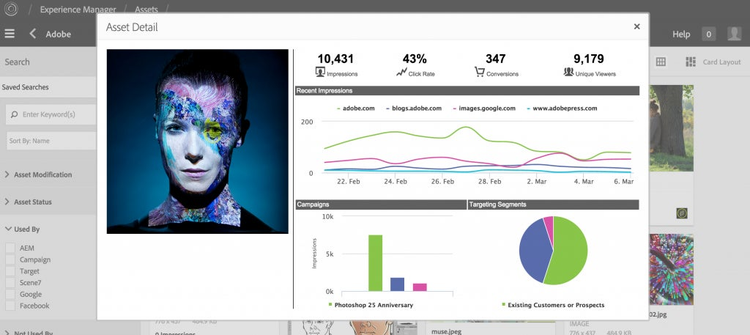The Art and Science of Asset Management


Effective asset management requires a deep understanding of each piece of content. How should the asset be labeled? What visual elements should be identified? What campaign elements are associated with it?
Tracking this data is a huge challenge, and even the best content management tools require a carefully planned strategy for tagging each asset with the appropriate metadata.

Of course, managing your metadata is just the beginning. To make the most of your assets requires the science of analytics — gaining insights from your data to understand which content is most effective and why. For many marketers that means pouring over spreadsheets, looking for connections between data points and interpreting the results.
But what if there was a way to make the whole process better — a way to make tracking assets foolproof and analyzing the data associated with their use more efficient?
“We’ve been looking at this for years, but it’s not a simple problem to solve,” says Steve Hammond, senior director of Marketing Cloud product management at Adobe. “First you need to have a unique ID for each asset, and then you need to know where that asset is being placed. Fortunately, we’re uniquely positioned to solve this problem. Adobe has a unique footprint across creative tools as well as the digital marketing and analytics landscape.”
This year, as part of the Sneaks session at Adobe Summit, the Digital Marketing conference, Adobe Research Scientist Craig Mathis revealed a new proof-of-concept demonstration that tackles these challenges head on, called SmartPic.
SmartPic’s advanced algorithm compares new content assets against an existing library of images, and then generates meta tags automatically, allowing marketers to forego the tedious, time-consuming process of manual data entry.
Once the asset is in the system, SmartPic collects and synthesizes campaign data across the Marketing Cloud with a uniquely visual analytics tool, capable of displaying the visual asset and its associated data side-by-side.
“You can immediately see an asset, its number of impressions or whether it is currently in use as part of a campaign,” explains Craig. “On top of that, I can get additional details about convergent data that’s attributed to the asset: what page it belongs to or the demographic segments it’s targeted at.

“But what’s really cool is that now all this analytics data effectively becomes metadata associated with the asset, and it can be used in searching and filtering. So I can easily find all my assets with the highest number of impressions, assets that are based on a similar image or assets that perform well with a particular demographic.”
SmartPic’s visual analysis has another benefit, as well — it opens the door for the marketing analyst to share their findings with creative people in a way that draws a direct connection between the visual asset and its analytic performance.
“Where this gets exciting is in the way that it makes the analytic data more accessible to the creative team, so that it’s not just the marketer who cares about the performance of the asset, but the people who are actually creating the work,” says Craig. “It brings the art of the creative team and the science of marketing analytics together in a way that hasn’t been done before.”
With technology concepts like SmartPic, Adobe is committed to improving the value of the Adobe Marketing Cloud across all roles in the marketing organization — from analysts, to marketers, to creatives — with simplified asset management, new ways of visualizing data and improved tools for collaboration.
See how _SmartPic _works here:
Check out other sneaks previewed on the Summit stage: